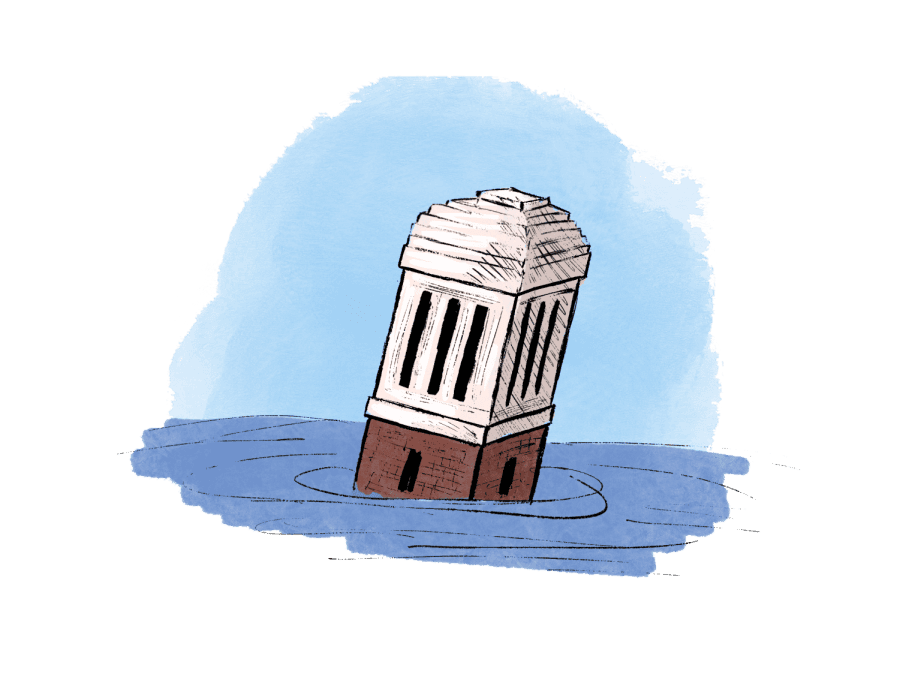When it rains, it pours: Why UA floods so often
Old infrastructure and new construction projects contributing to UA flooding problems
August 17, 2022
When students come to the University of Alabama, they find that not only is the climate generally muggy and intensely hot most of the year, but torrential rainfall isn’t unheard of, or even uncommon.
According to the National Oceanic and Atmospheric Administration Climate Normals, the United States average annual precipitation amounted to 30.28 inches, whereas the annual average for Tuscaloosa amounted to 57.78 inches.
As a result of this amount of precipitation, flooding has been a common problem on campus, as well as in the city of Tuscaloosa at large. Last year was a prime example of this: on Sept. 18, 2021, the UA campus experienced a substantial downpour that accumulated “3.5 inches of rain in just over an hour,” according to the University’s official website,
In this incident, multiple campus buildings were affected and stormwater systems throughout Tuscaloosa were “backed up,” according to the University’s flooding updates. Several basement-level classrooms in Farrah Hall, Reese Phifer Hall, Doster Hall and the Bureau of the Mines were “damaged and taken offline” for up to two weeks.
Rain like this is expected, due to the local climate and infrastructure. Hamed Moftakhari, a civil engineering professor at The University of Alabama who specializes in water engineering, said that Tuscaloosa is in “one of the wettest regions in the United States,” so during a wet season, “torrential downpour” is normal.
Despite the expectation of large amounts of precipitation and preventative measures such as calculating the amount of storm water drainage systems can handle before installing them, Tuscaloosa still floods often.
According to Moftakhari, part of the reason Tuscaloosa floods so often is because of its modernized nature. Absence of green space—specifically the replacement of green space with shingles or concrete—increases the risk of flooding, because the rainwater cannot be reabsorbed into the ground and instead must build up on the surface.
“There are a number of projects going on around Tuscaloosa, which is nice and a good sign of growth and development,” Moftakhari said. “However, you have to consider the unintended effects of these land intensification projects.”
Another major factor in the flooding Tuscaloosa experiences is the fact that the systems put in place to mitigate the build-up of water, despite being originally constructed with calculations in mind to account for the rainfall Tuscaloosa experiences, have remained the same for years.
“Our city has drastically evolved over the past two decades,” Moftakhari said. “This means that even if the climate does not change, the amount of runoff being generated is way different than it was in the past as the amount of impervious surfaces, like concrete or shingles, increases.”
Moftakhari said a potential fix to this problem would include something like a green roof, which is essentially a rooftop garden instead of shingles or other impenetrable, artificial surfaces used for roofing, or a permeable pavement, which is partially concrete and partially soil.
Moftakhari said these avenues, as well as other ambient options, are both “environmentally friendly and effective for stormwater management.”
In response to the flash flood incident on Sept. 18, 2021, the University said that, looking forward, they will “keep flooding concerns at the forefront of planning,” and that they intend to work with “several research teams to monitor flood prone areas.”
The University did not respond to multiple requests for comment about any progress or updates that have been made regarding prevention or preparation of flash flooding.










